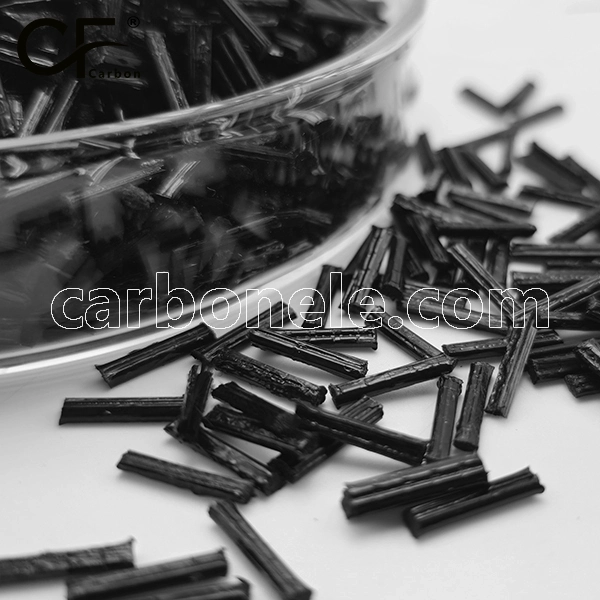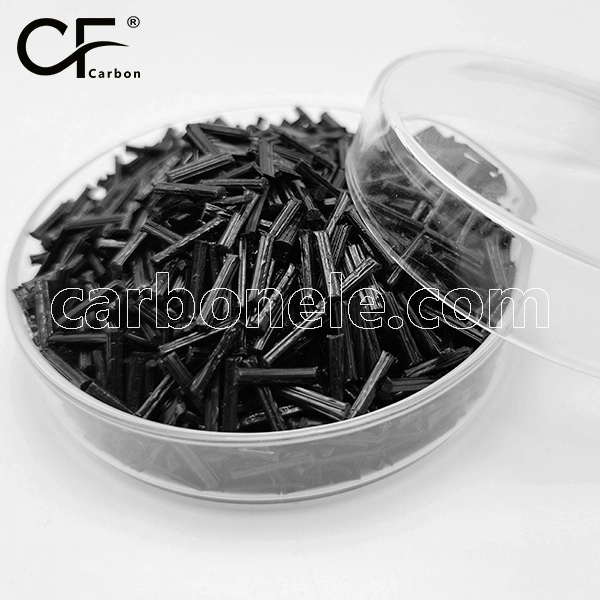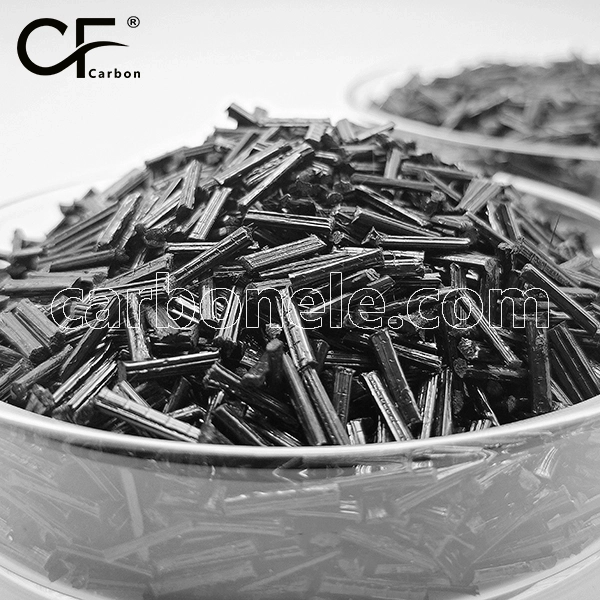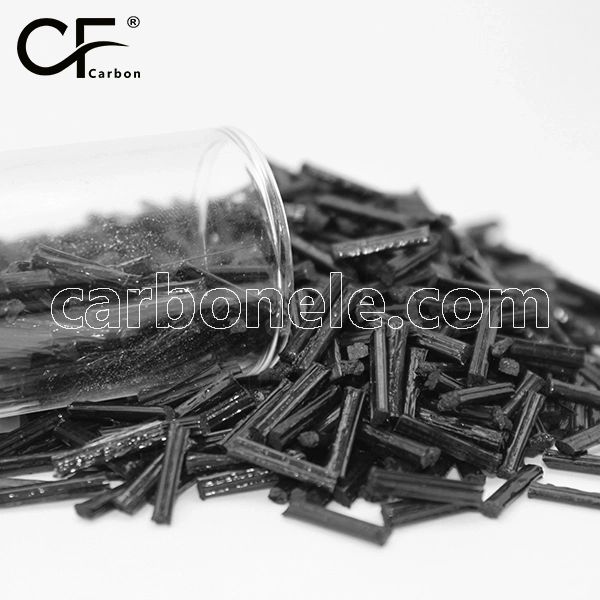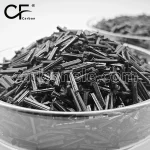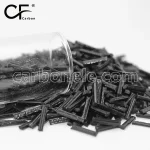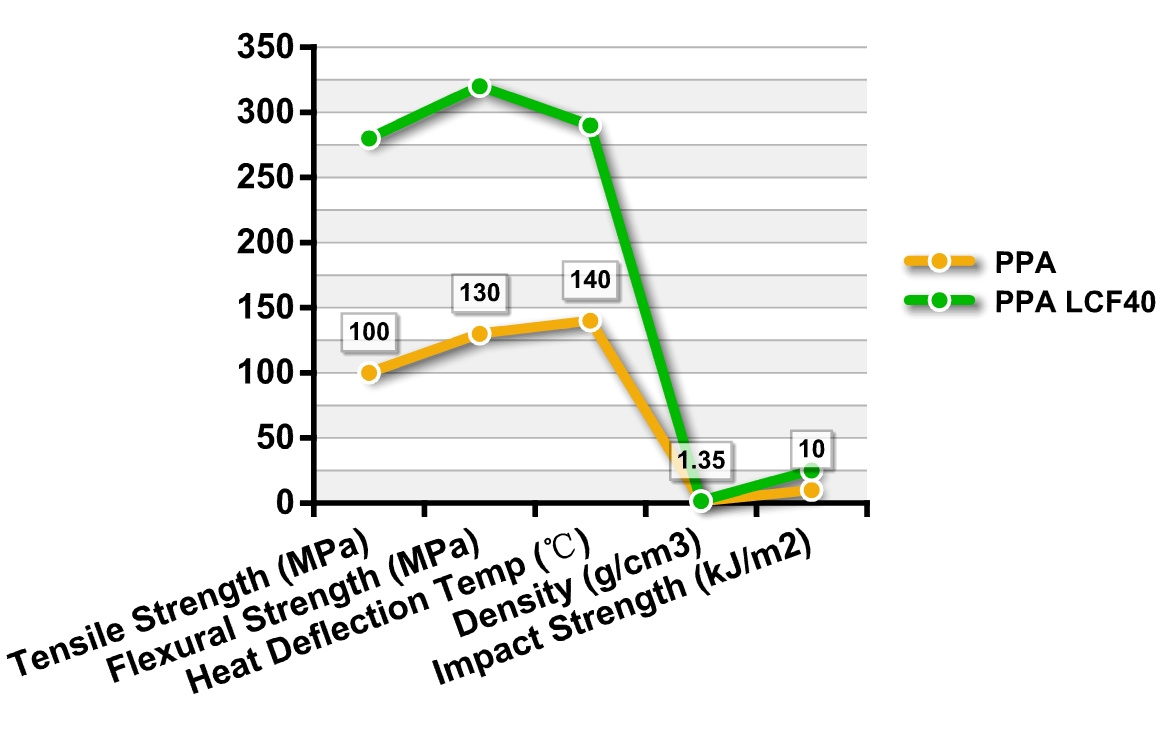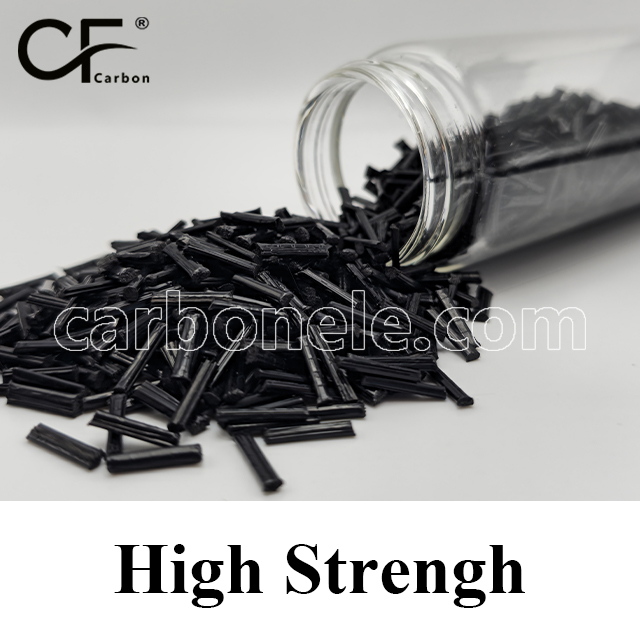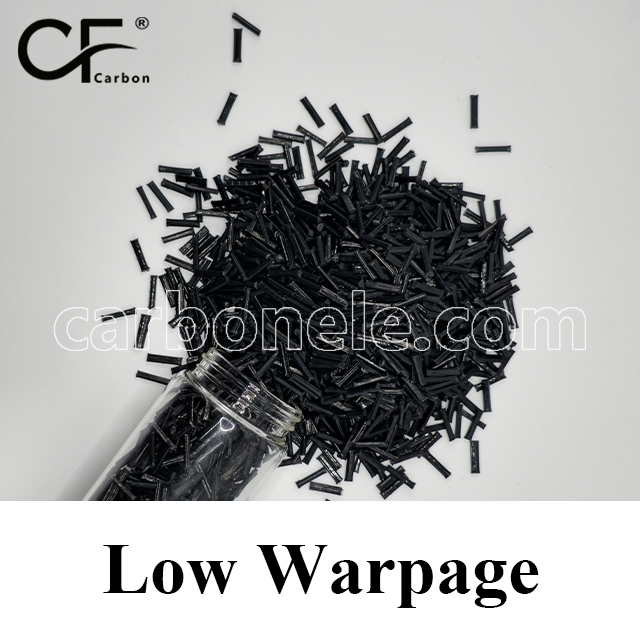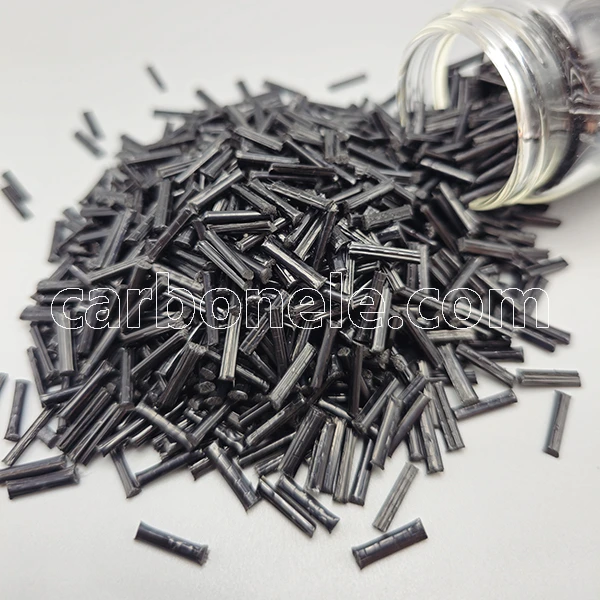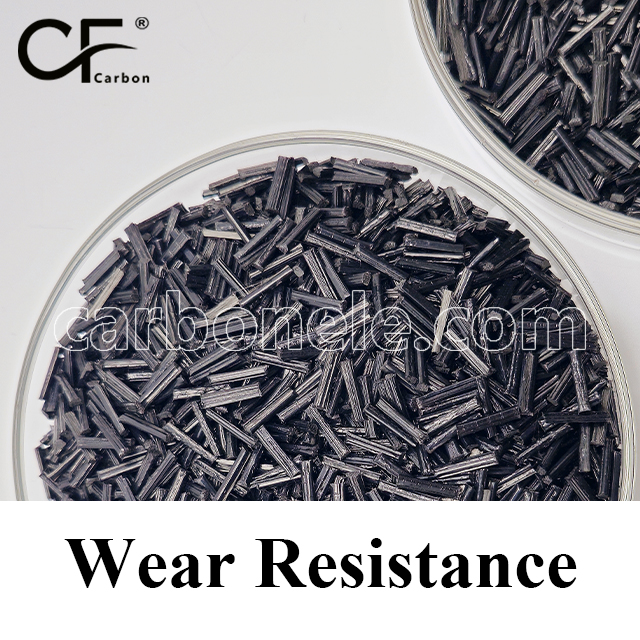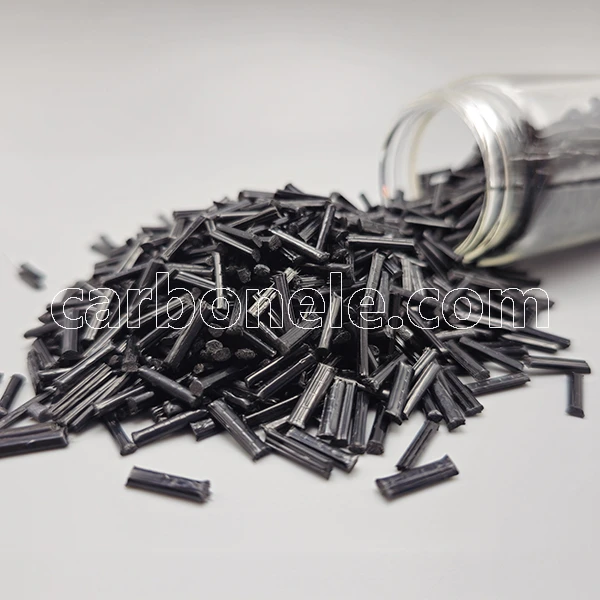
PPA LCF40 Compounds for Golf Club Heads
- Manufacturer: Carbon New Material
- OEM/ODM: Acceptable
- Color: Black
- Free Samples: ≤25kgs
- MOQ: 100kgs
- Port: Xiamen
- Model: PPA-LCF-BCA4
- Fillers: Long carbon fiber
PPA LCF40-60 Features:
1. High modulus and elongation ensure stable and accurate hits in club heads.
2. Good acoustic performance provides a pleasant sound when hitting the ball.
3. Excellent chemical resistance protects club heads from chemical erosion.
4. Low surface resistivity enables electrostatic spraying for component protection.
5. Lightweight and high strength make club shafts easy to control and powerful.
6. Good dimensional stability keeps club shafts’ performance consistent in different conditions.
Applications of PPA LCF40-60 in Golf Clubs
| Application Part | Application Advantages | Specific Performance |
|---|---|---|
| Golf Club Head | Excellent Mechanical Properties | High modulus and high elongation, not easy to deform during hitting, ensuring accuracy and stability |
| Good Acoustic Properties | Compared with ordinary nylon, it produces a clearer and more pleasant hitting sound | |
| Good Chemical Resistance | Can resist the erosion of chemicals in the golf course environment and extend the service life | |
| High Electrical Conductivity | Low surface resistivity, suitable for electrostatic spraying, protecting electronic components, etc. | |
| Golf Club Shaft | Lightweight and High Strength | Low density with carbon fiber reinforcement, lightweight and sturdy, improving swing speed and hitting distance |
| Good Toughness | High elongation endows toughness, and it can elastically deform during hitting to store and release energy | |
| Good Dimensional Stability | Maintains dimensional stability under different temperature and humidity conditions, ensuring consistent performance of the golf club |
If you want to buy High Strength PPA LCF40-60 for Golf Club Heads & Shafts or understand more carbon fiber reinforced thermoplastics (CFRTPs) produced by Carbon Fiber Material, please feel free to contact us at any time.
Read more about CF reinforced thermoplastic polymers, please click here.
PPA & PPA LCF40
The performance comparison between PPA resin and PPA LCF40 composite shows that the PPA LCF40 composite outperforms the PPA resin in most aspects. The PPA LCF40 composite has a tensile strength of 280 MPa compared to 100 MPa for the PPA resin. Its flexural strength is 320 MPa versus 130 MPa of the PPA resin. The heat deflection temperature of the PPA LCF40 composite is 290 °C, much higher than the 140 °C of the PPA resin. The density of the PPA LCF40 composite is 1.55 g/cm³ compared to 1.35 g/cm³ of the PPA resin. Additionally, the impact strength of the PPA LCF40 composite is 25 kJ/m², which is higher than the 10 kJ/m² of the PPA resin.
Get to Know Carbon Fibers
Carbon fiber features high strength with its tensile strength exceeding that of many traditional materials, high modulus resulting in little deformation under force, low density making it lightweight, good high-temperature resistance, chemical stability, as well as electrical and thermal conductivity. According to strength, it can be roughly divided into general-purpose types (T300 grade), high-strength types (T700 and T800 grades), and ultra-high-strength types (T1000 grade and above), each having different application focuses.
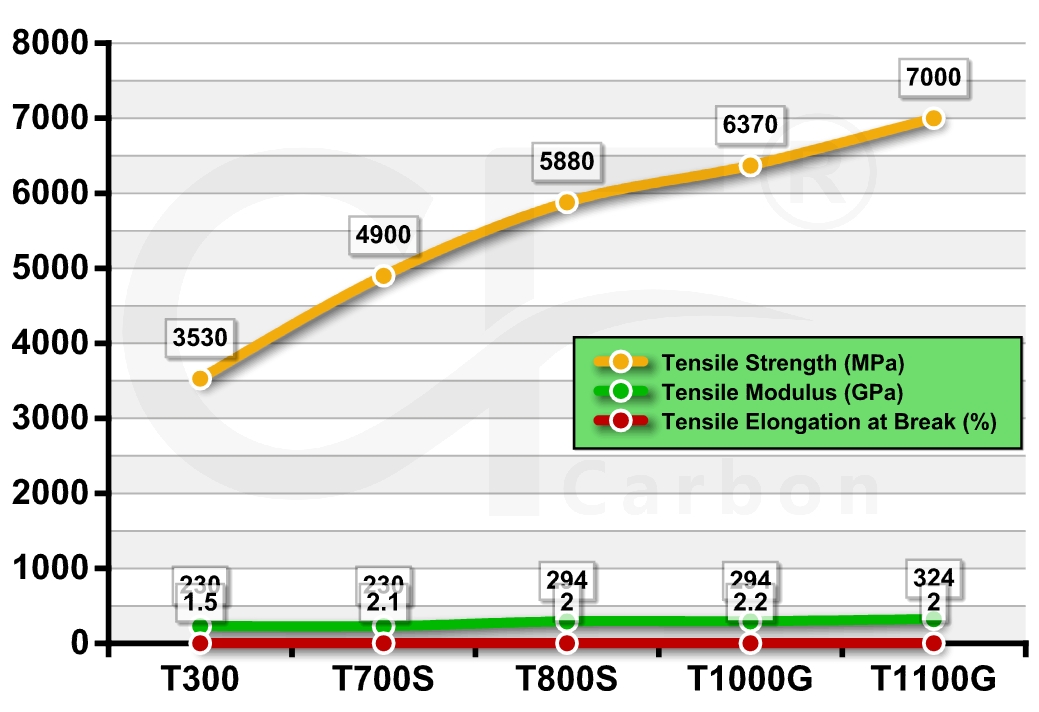
Why Choose Us?
Carbon (Xiamen) New Material Co., Ltd. stands out for its expertise in CFRTPs. We possess cutting-edge tech, ensuring top-notch product quality. Our dedicated team offers personalized service and strict quality checks. Choose us for reliable materials and a seamless cooperation experience.
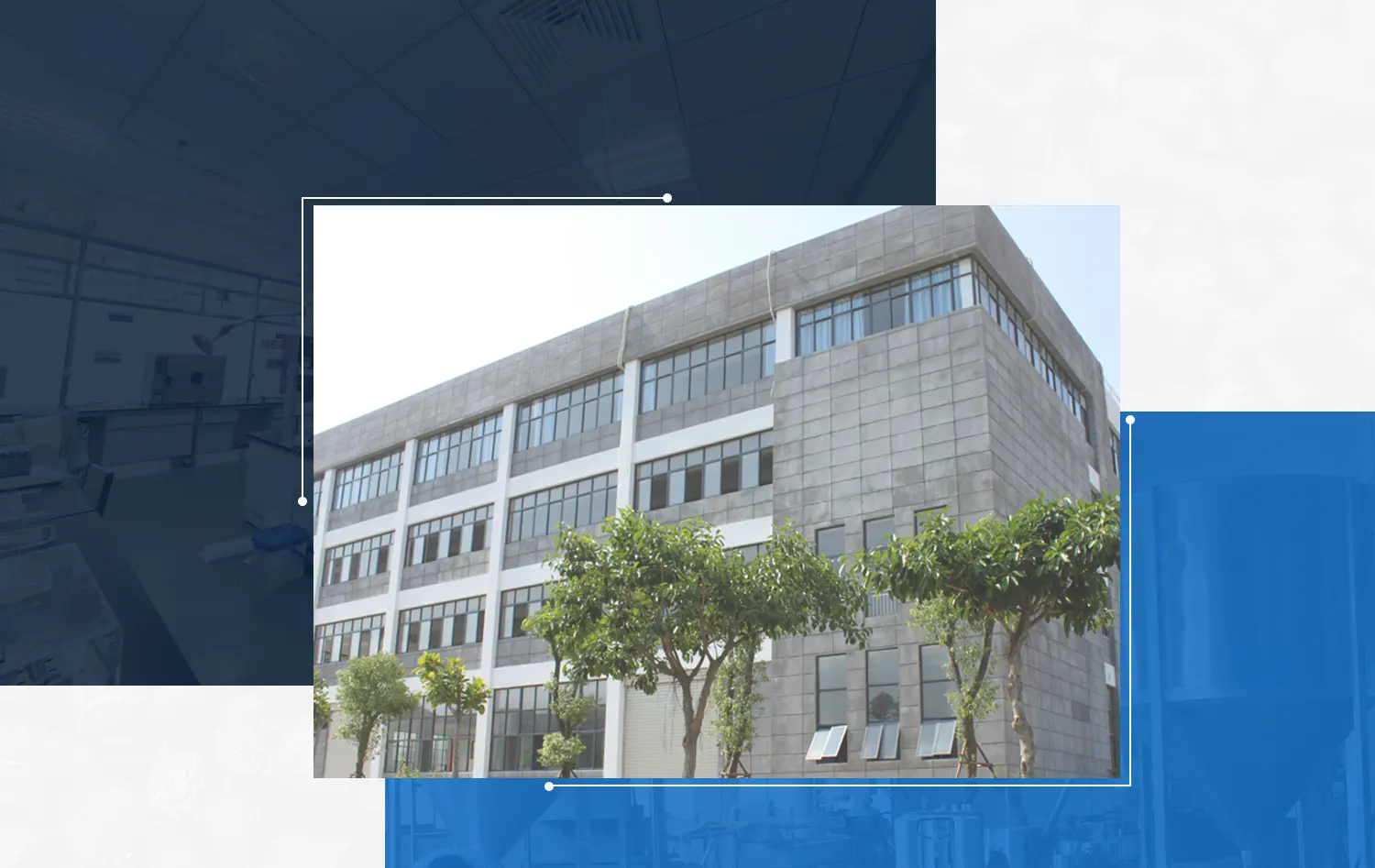
How to Buy?
If you want to obtain information such as product specifications, performance, and price, choose a suitable product according to your own needs. Meanwhile, you can ask the manufacturer to provide samples for testing to ensure that the material meets your usage requirements. If you are interested in purchasing this composite material, please contact the manufacturer Carbon (Xiamen) New Material directly.
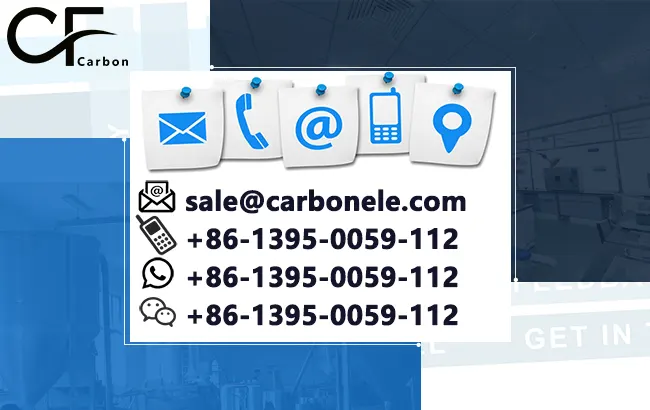
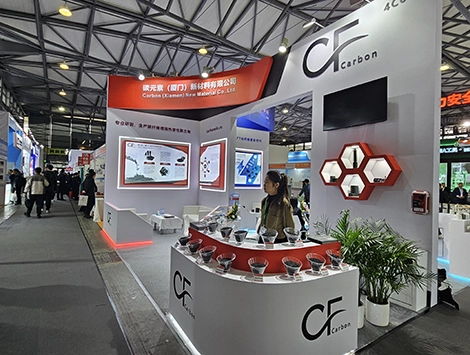

Frequently Asked Questions
Carbon (Xiamen) New Material Co., Ltd. aims to provide buyers with "one-stop" worry-free high-quality services. Here you can find all information about carbon fiber engineering plastics. If you still have questions, please send us an email for consultation!
-
How can I contact the manufacturer of a product that interests me?
When you find a product you are interested in, you can contact the manufacturer directly by sending an email and we will get back to you as soon as possible.
-
How do I find the products that interest me?
All you need to do is enter the keyword, product name in the search window and press the Enter key on your keyboard. Your search results page will then be displayed. You can also search within the product category pages on the home page. Each category is divided into subcategories, allowing you to refine your search and find products that interest you.
-
Where will I find a buying guide?
Please contact our after-sales service directly and we will provide you with a comprehensive operating guide.
-
What are CF Reinforced Thermoplastic Composites?
CF Reinforced Thermoplastic Composites are materials where carbon fibers are incorporated into a thermoplastic matrix. They combine the strength and stiffness of carbon fibers with the processability and recyclability of thermoplastics. For instance, they are used in automotive parts like bumper beams.
-
What are the benefits of CF Reinforced Thermoplastic Composites over traditional composites?
The key benefits include faster production cycles, easier recyclability, and better impact resistance. They also offer design flexibility. An example is in the manufacturing of consumer electronics casings where complex shapes can be achieved more easily.
-
How are CF Reinforced Thermoplastic Composites processed?
Common processing methods include injection molding, extrusion, and compression molding. Injection molding is widely used for mass production. For example, in the production of small components for the medical industry.
-
What industries use CF Reinforced Thermoplastic Composites?
They are utilized in aerospace, automotive, medical, and sports equipment industries. In aerospace, they can be found in interior components. In the medical field, they might be used in prosthetics.
-
How does the carbon fiber content affect the properties of the composites?
Higher carbon fiber content generally leads to increased strength and stiffness but may reduce ductility. A moderate content is often balanced for specific applications. For example, a higher content might be preferred in structural parts of a race car.
-
What are the challenges in using CF Reinforced Thermoplastic Composites?
Challenges include higher material costs, complex processing equipment requirements, and ensuring uniform fiber dispersion. Issues with adhesion between the fibers and the matrix can also arise. An example is in achieving consistent quality in large-scale production.








